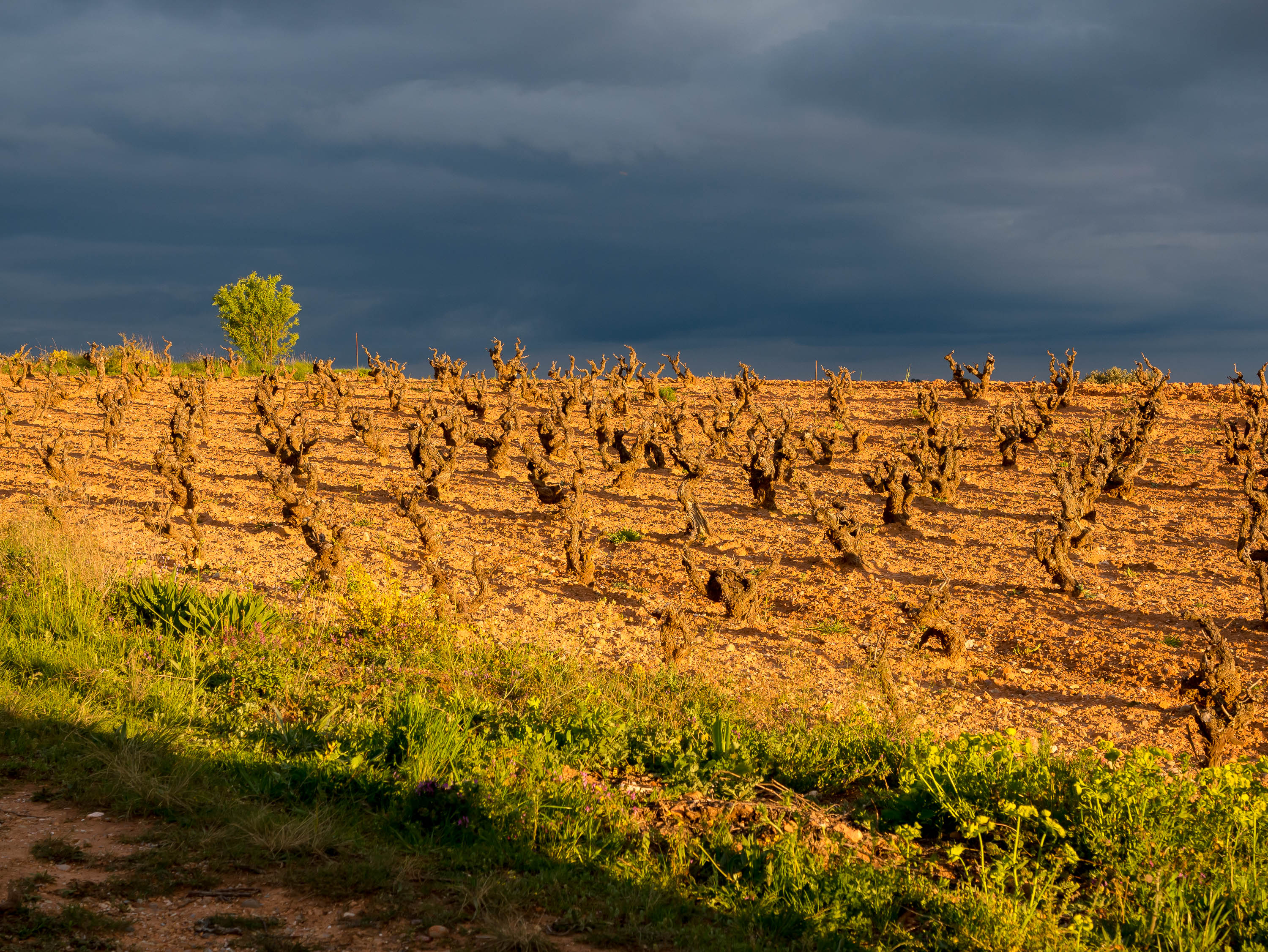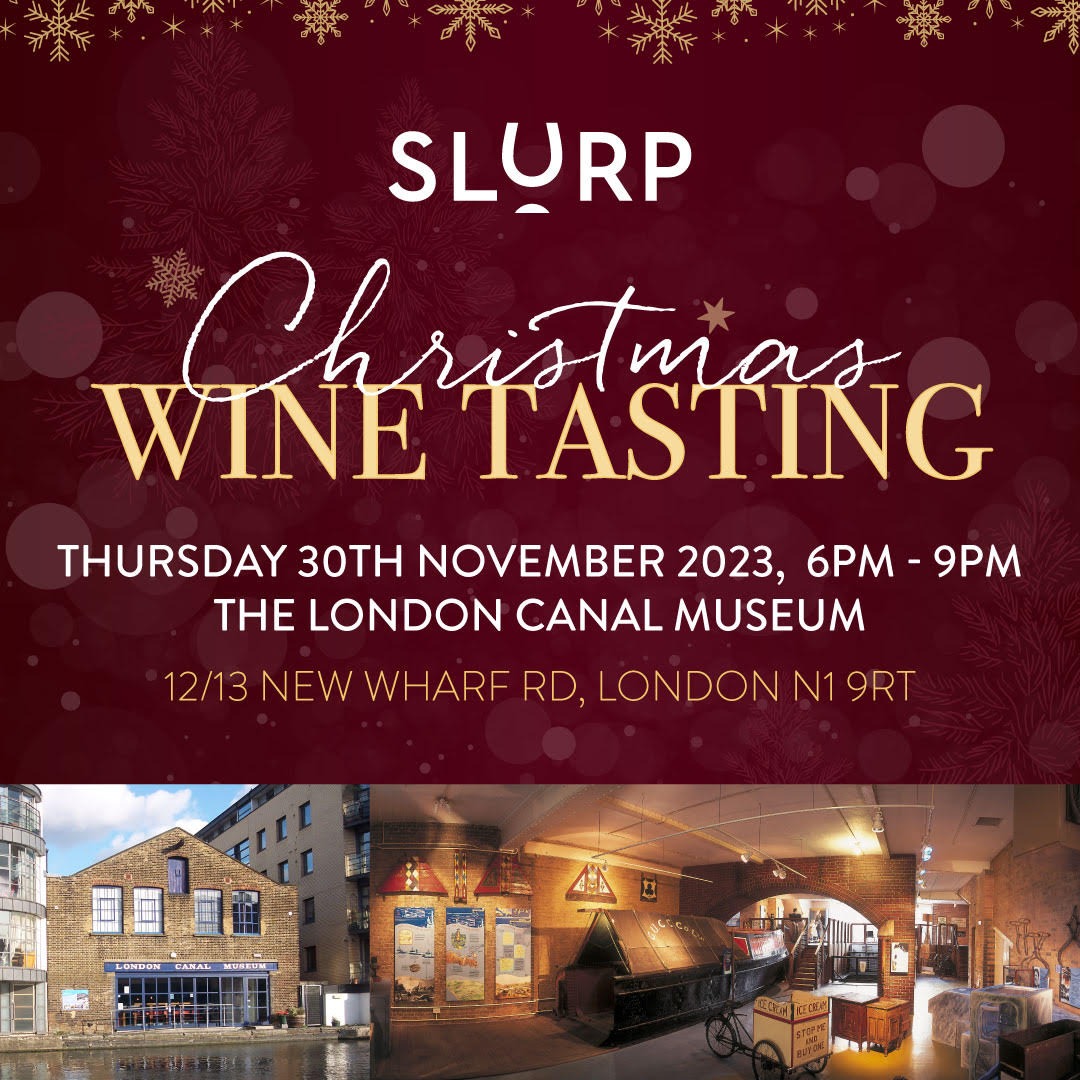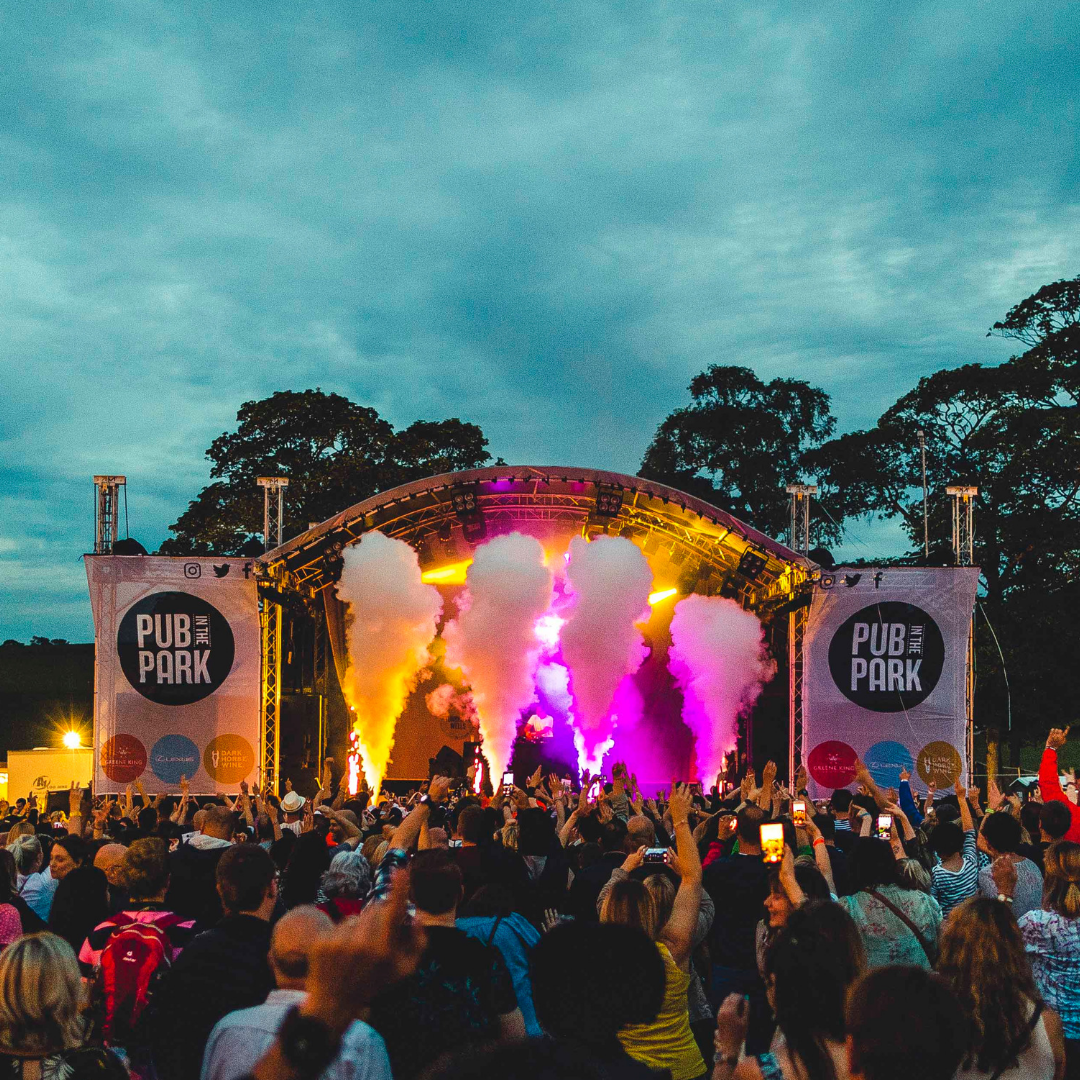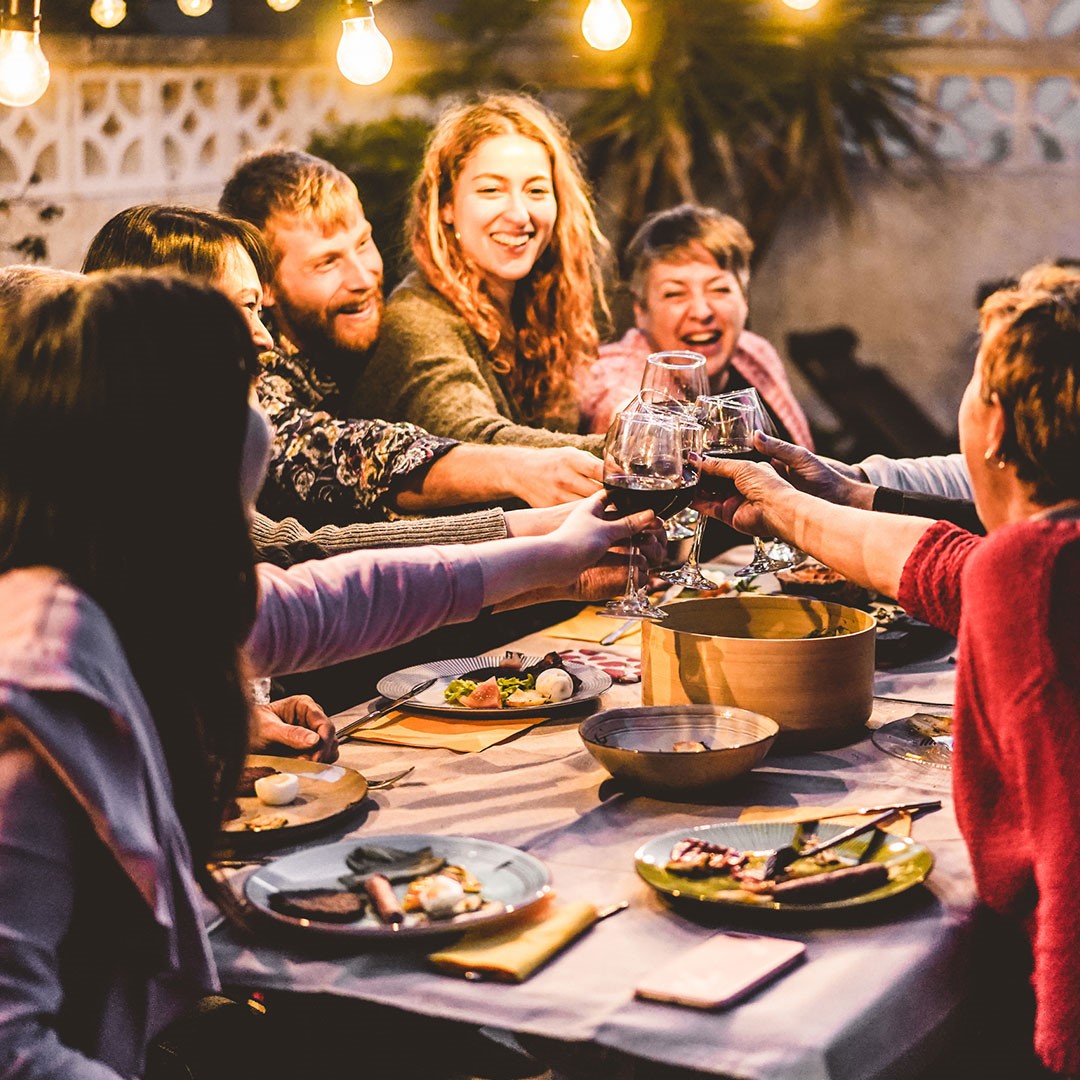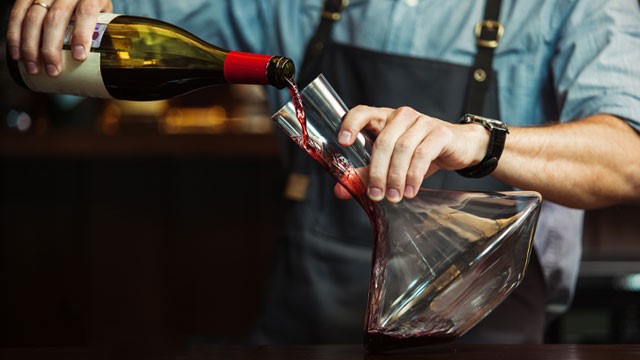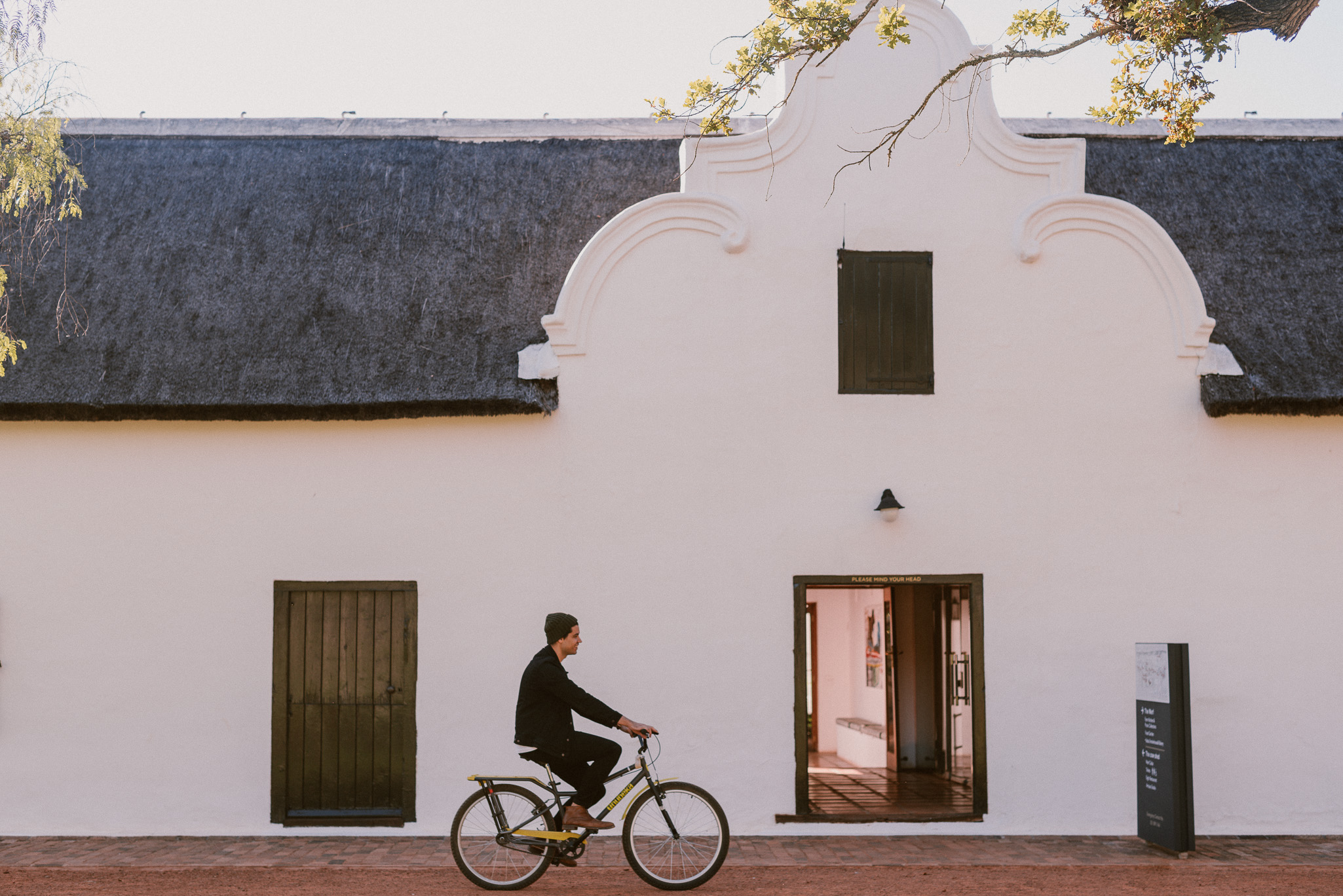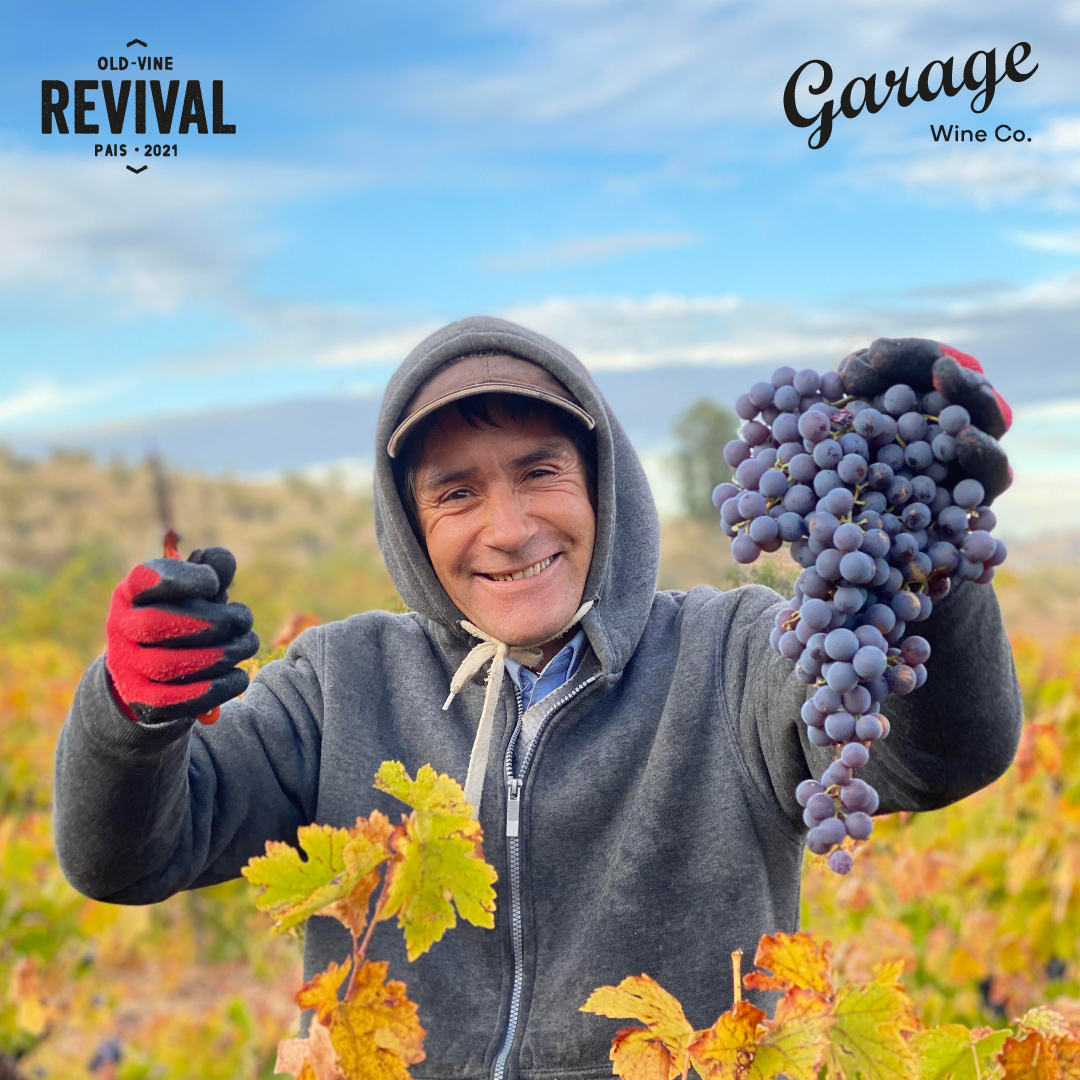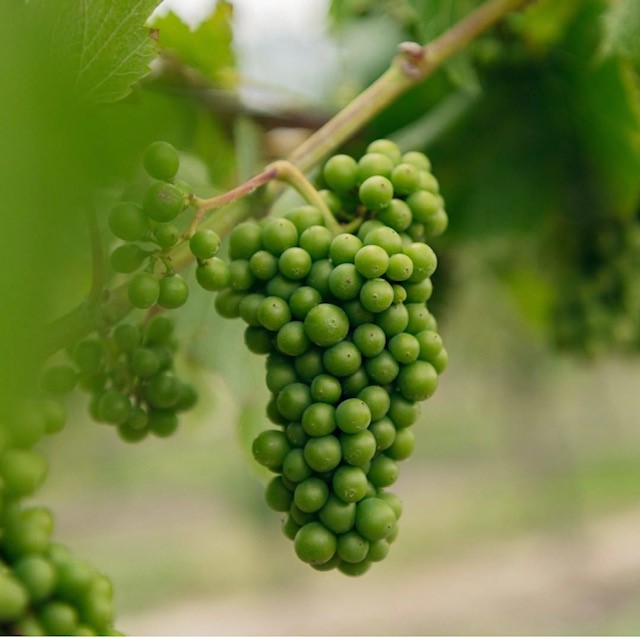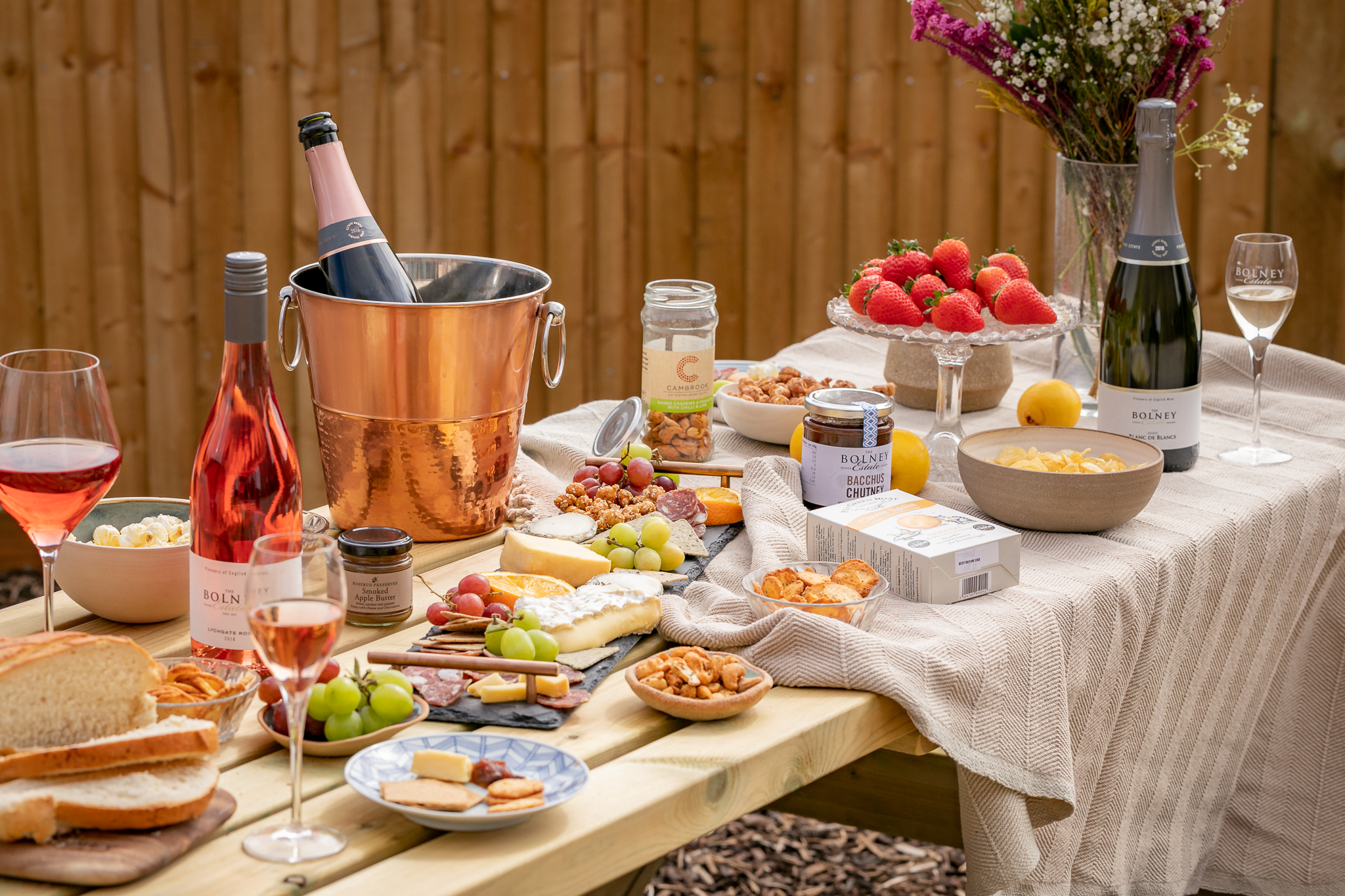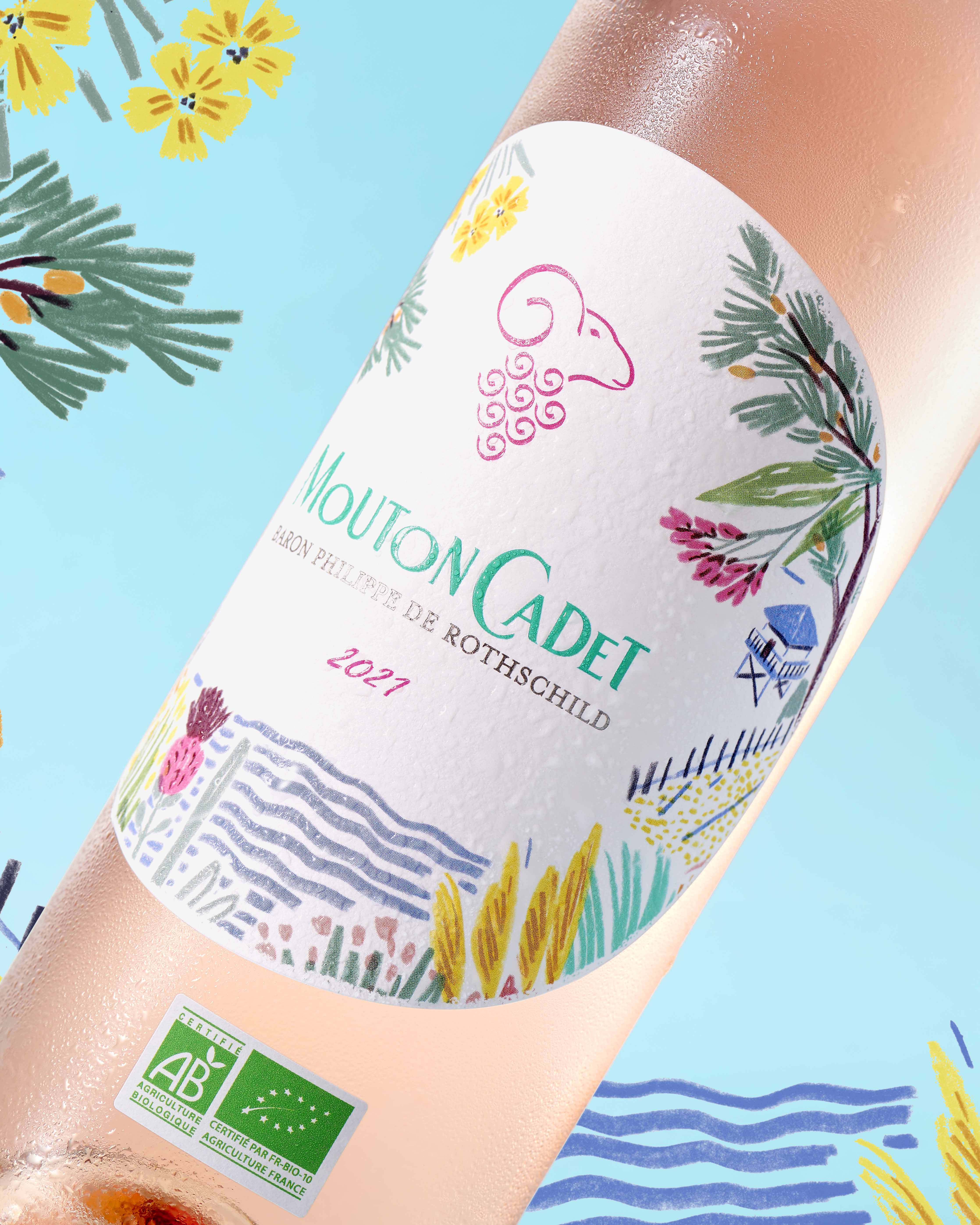Schloss Johannisberg: Celebrating 300 years of Riesling during 31 Days of German Riesling
- The World of Slurp
- 1 Jul 2020
-
201views
Happy 300th 'Riesling' Birthday!
For the last 300 years Schloss Johannisberg has been a leading producer of sensational Riesling wines. One of the first estates in Germany to convert to single-varietal viticulture in 1720 and then pioneering (by accident) the infamous late harvest (Spätlese) style of Riesling, Schloss Johannisberg occupies a unique place in the world of wine, that very few estates can ever dream of joining.
This blog post was written by Will Willis following his visit to the Schloss Johannisberg Estate in December 2019.
“The best wines from Schloss Johannisberg are of an exceptionally forceful type; full-bodied and long-living with all the good characteristics of a classic Riesling from an excellent site. I once drank an 1870 vintage which, after more than a century, was still full of strength and let me feel traces of its original aroma!” Hugh Johnson, Encyclopaedia of Wines
As I drove up towards the ancient town of Johannisberg on a damp December lunchtime, following a road that was gently circling around the base of a hill covered with vines, I could see in the distance a majestic Castle sitting proudly at the top, overlooking the vineyards and mighty river Rhine behind me.
This is Schloss Johannisberg (literally translated as John’s Hill Castle) and I was about to learn about its amazing history and why it is responsible for one of the most important developments in German wine production…
Of the 760 miles of the river Rhine’s passage to the North Sea, most of the flow in Germany is in a northerly direction. However, at Mainz/Wiesbaden the Rhine is joined by the Maine river and it changes direction, thanks to the Taunus hills, doubles in width and heads west for just 31 miles. As a result, all the slopes on the right bank of this majestic river face south. This small region is called the ‘Rheingau’ and is one of the most important homes to the King of Grapes, Riesling.
Vineyards here date back to 9th Century. Snow was always last to arrive and first to melt on these southern slopes (as documented by Emperor Charlemagne) which suggested that vines planted here would thrive. A mixture of slate, sandstone and limestone soils with a predominance of quartzite (especially at Johannisberg) is perfect for vine-growing and specifically Riesling. In 1130 the name of the hill, Benedictine Monastery and district was changed from ‘Bishop’s Hill’ to John’s Hill (Johannisberg) when the Romanesque basilica to St.John the Baptist was consecrated.
However, it is not until 1720 that the ‘modern history’ of Schloss Johannisberg begins.
With Riesling being the preferred wine in the Royal Courts and, having noticed that that the quality of the Riesling grapes grown on these south-facing slopes was consistently high, the owners replanted the estate just with Riesling, making it the first ‘mono-varietal’ estate in the region. To this day throughout the world, when Riesling vines are planted the resulting wines are often given the name ‘Johannisberg Riesling’.
Standing at the top of the hill looking down at the Rhine, next to the modern day Schloss (sadly the original building was almost totally destroyed in 1942), you really get a sense of the magic that this terroir brings to each bottle. The 50° Latitude runs right through the heart of the estate and the land drops away towards the river with the gradient reducing as it approaches the floodplain.
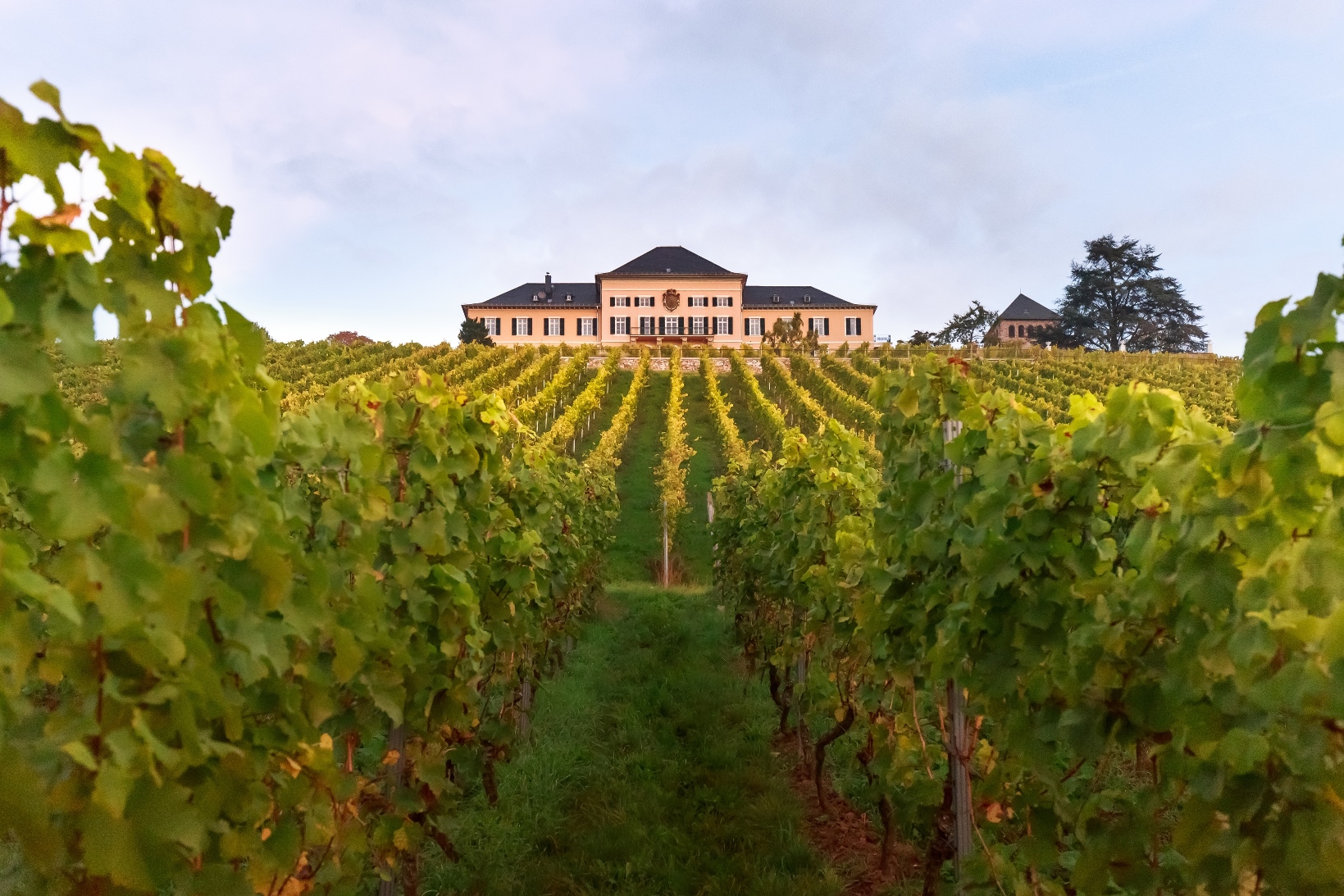
As a result, the slopes see sunshine all day and benefit from not only a reflection of the sun’s rays off the surface of the river, but also from a flow of cooler air in summer and warmer air in winter. Due to the steepness of the 50Ha of vines, with an average age of 25 years, all vineyard work is manual, and the care of these vines is second-to-none. From this vantage point it is easy to see the uniqueness in growing, and thus ripening, differences between the south-east (morning sun), south and south-west (afternoon sun) vineyards and the points in those vineyards with the best 45° angle to the sun. It is here that the Grosses Gewächs (GG) or ‘First Growth’ sites can be identified, producing the estate’s best wines, and first introduced by Schloss Johannisberg in 1870.
As you walk around the back of the Schloss you will find the small oak door that leads into the ancient, subterranean cellars that have been used for more than 900 years. The smell is intoxicating (honeyed apple, peach and passion fruit combined with garden herbs, mature forest floor and mushrooms) and the constant temperature is perfect for ageing Riesling in the oak barrels that are made from estate-owned trees. Yes - Schloss Johannisberg have their own forest which climbs up the Taunus hills away from the river, behind the town. It is a fantastic place to enjoy a brisk, ‘pre-tasting’ morning walk or a gentle ‘post-lunch’ afternoon stroll! The oak trees are between 130-200 years old and grow very slowly which gives them a strong, tight grain – perfect for barrels that are going to be used for many, many years.
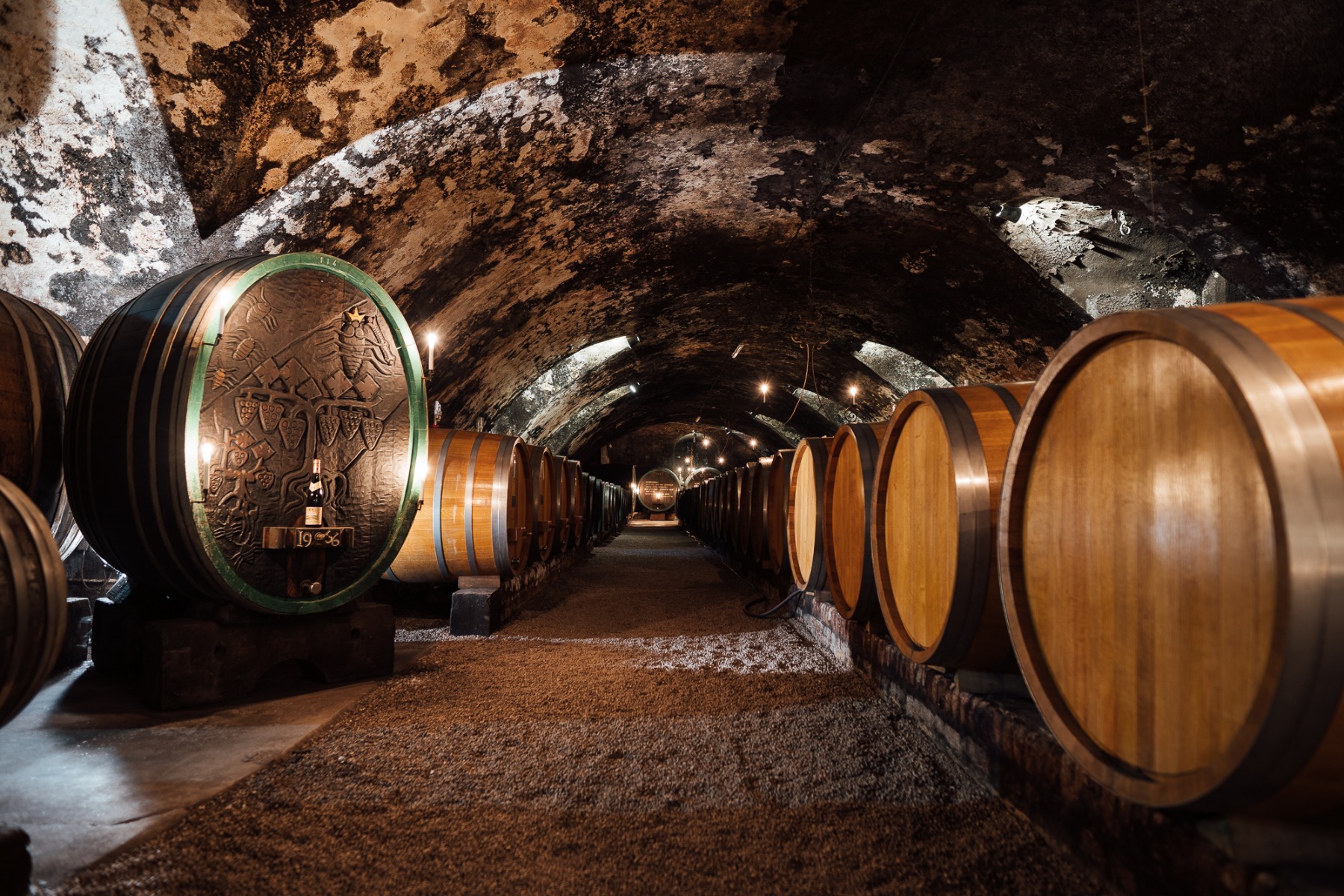
It is in the cellar that I tasted and learned about the final unique gift that Schloss Johannisberg has given to the world of wine: the Prädikat system of classification, based on ripeness of the grapes at the time of harvest. Following the replanting of the estate in 1720, the owners of Schloss Johannisberg were based in the Monastery at Fulda, about 65 miles north-east. Before harvest could begin, a selection of grapes would be couriered by a messenger on horseback to the prince-abbots in Fulda and would usually return within 3 days with the necessary approval. In 1775, however, the courier returned so late that the grapes were overripe, starting to shrivel and even rot. In despair (and fear!), the cellar master decided to harvest anyway, and the resulting quality of the wine was hailed as a triumph - the Spätlese (late-harvest) style of Riesling was born! Sweeter in style than the traditional dry/off dry styles, Johannisberg Spätlese combines the absolute best of Riesling’s naturally high, minerally acidity with a delicate honeyed sweetness and ripe citrus and stone-fruit flavours. There is a statue of the courier in the courtyard of the Schloss to honour this occasion and I believe it is the only monument in the world dedicated to someone for being late!
I cannot recommend a visit to Schloss Johannisberg highly enough – it really is one of the most picturesque and historically important wine locations. Just 50Ha of estate vineyards that have changed the world of wine. Visits must be arranged by appointment only and will culminate in a vertical tasting of the core wines, all characterised by the iconic coloured capsule and signature label dating back to 1820. From the four dry styles (yellow, bronze, sliver and gold) to the medium dry and sweet styles (yellow, red, green (Spatlese), pink, purple and blue (trokkenbeerenauslese – literally “dried berry selected harvest”!), Schloss Johannisberg offers a Riesling for everyone and for every occasion!
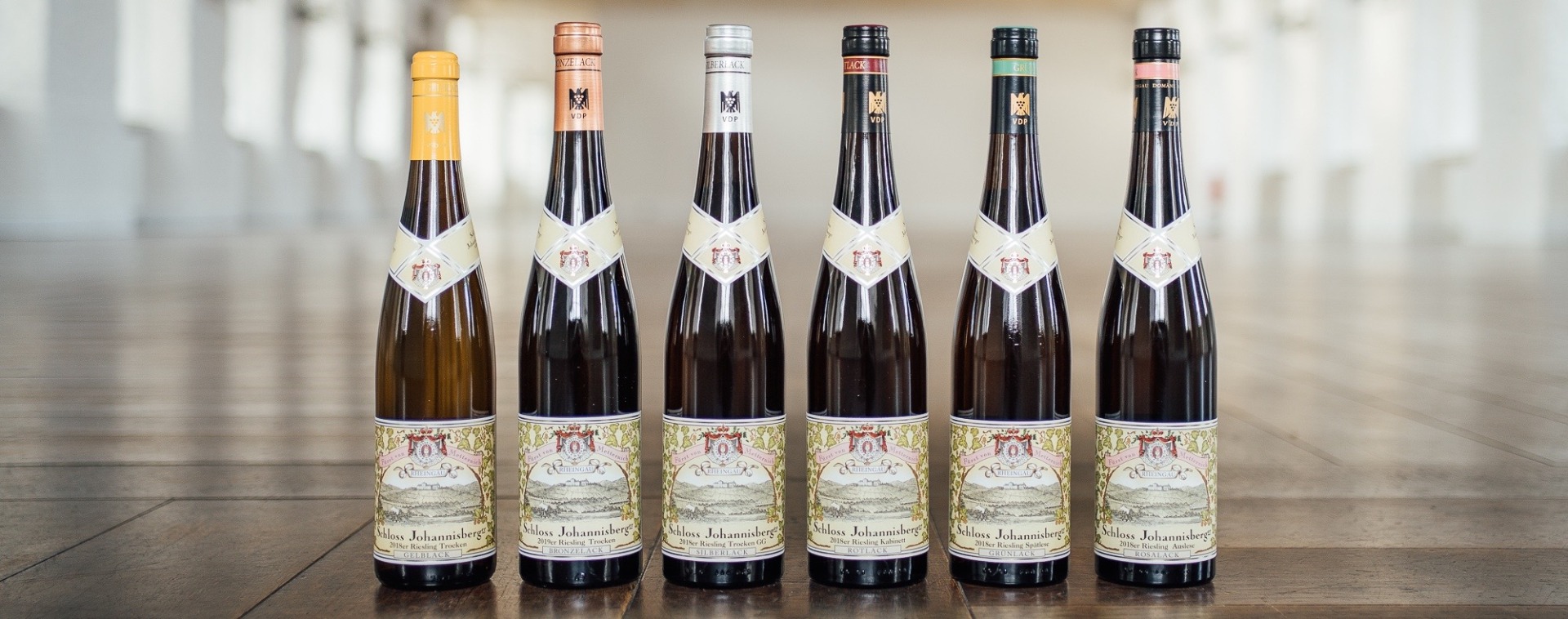
Unique location; unique soils; unique grape variety; unique history and a unique quality. Happy 300th Birthday, Schloss Johannisberg. Here’s to the next 300 years!
Explore the fantastic Schloss Johannisberg range here>>>.





